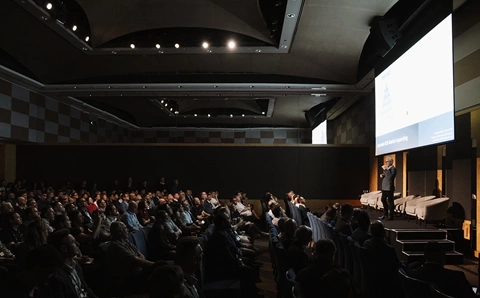Dell is promising to help customers escape hypervisor vendor lock-in with a new platform that can automate the management and deployment of various private clouds.
Dell Private Cloud uses Dell Automation Platform (DAP) to let users build and shift workloads across various private cloud providers, including VMware and Nutanix.
Dell Technologies PowerStore global evangelist Jodey Hogeland said that the product was developed in response to changing appetites for going all in on a single hyperconverged infrastructure (HCI) vendor.
“If you rewind the clock, years ago you had traditional three tier designs where you had customers deploying, a vendor for compute context, network context, and maybe a different vendor for storage … it's flexible, but there's a lot of complexity because you're dealing with 2, 3 or 4 different vendors and trying to keep things consistent," he said.
“And then everybody said, ‘Okay, well, that's good, but we want simplicity.’ And a lot of customers went down the HCI route and said, ‘Hey, let's make it simple. You've got the easy button, I deploy, I scale, that's great'.”
He added that since the Broadcom acquisition of VMware, people have started to reconsider this approach.
That acquisition resulted in a wave of VMware customers and partners being faced with drastically increased costs when licences came up for renewal, which has left many VMware customers considering the possibility of leaving the vendor behind in part or entirely.
Hogeland continued: “Not that there's anything wrong with VMware, but the inconsistency of what does the future look like there becomes concerning to a subset of customers," he told techpartner.news.
He explained that Dell Private Cloud offers a range of “blueprints” that allow for increased mobility between various providers without the need for lengthy migration projects.
“We give customers a self service portal that allows them to discover their Dell infrastructure assets – compute, storage, networking – and then literally select a blueprint: I want to deploy vSphere, I want to deploy Nutanix, I want to deploy OpenShift virtualisation," he said.
"You select the blueprint and that blueprint is basically all of the scripting and automation framework to rapidly deploy that environment.
“What used to take customers weeks or months of setting up servers, provisioning, setting up storage, connecting, mapping, zoning, all of that stuff now happens in seconds, and customers can actually shift that hypervisor.”
Hogeland said that Dell is working on the ability for customers to create their own blueprints that will allow for even more flexibility around the kinds of workloads that can be shifted, and where they can be shifted to.
“When you look at it from a storage lens, it doesn't matter if I'm trying to deploy a hypervisor with traditional workloads, if I'm trying to deploy containers and modernised workloads, if I'm trying to do AI deployments - the Dell Automation Platform and Dell Private Cloud gives a simplified interface and a very rapid provisioning and deployment methodology to make that literally happen in seconds versus days or weeks or months," he said.
Hogeland also said that as hybrid cloud becomes more common, customers are increasingly wanting the flexibility and adaptability of public cloud in their private infrastructure, and the hyperscalers are trying to figure out how to deliver their services within a private environment.
“That's really where our infrastructure, as well as Dell Private Cloud and Automation Platform, allows customers to instantaneously build that on prem/private cloud context," he said.




.png&h=142&w=230&c=1&s=1)


_(21).jpg&h=142&w=230&c=1&s=1)




.jpg&w=100&c=1&s=0)
_(8).jpg&w=100&c=1&s=0)









